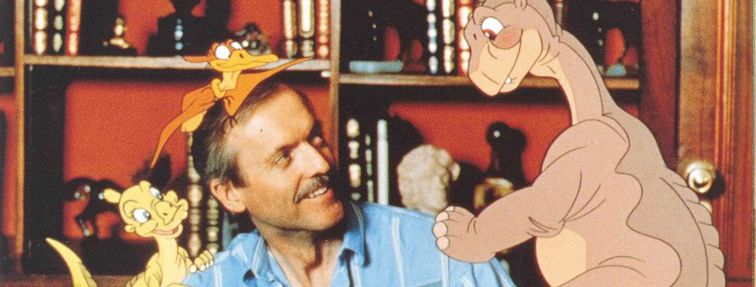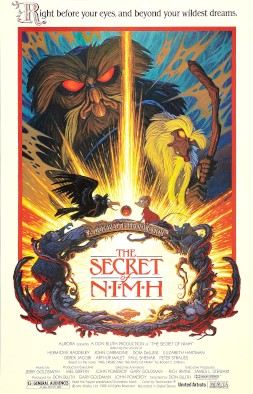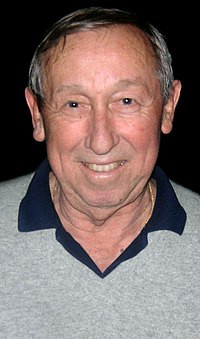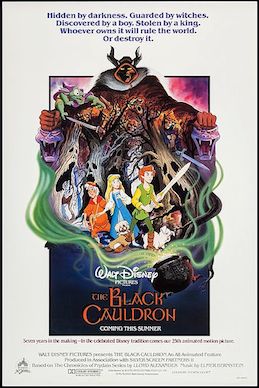 |
| Imperial March playing in the background |
And when one takes a look at the greater portion of these properties, a pattern emerges. The majority of them belong to a specific period of incredibly high-performing and critically lauded animated films released between 1989 and 1999, more popularly known as in cinematic history circles as the "Disney Renaissance".
But what about the period before the Renaissance? What was the state of Disney animation in the decades following the death of their founder, when the Nine Old Men began to pass and new talents rose and fell to eventually define my generation's childhood?
***
The Shadow of Walt Disney
(1966 - 1977)
(1966 - 1977)
| Walt E. Disney (1901 - 1966) |
On the 15th of December, 1966, Walt Disney, the founder and face of the Walt Disney Company, passed away after a battle with lung cancer. In the wake of his loss, it fell to his brother, Roy O. Disney, to fulfill not only his dream for Disney World and EPCOT but also to maintain the legacy of animation which had started their company in the first place.
In the immediate years following Walt's death, many of the film's released were ones that were overseen or approved by Walt personally, such The Jungle Book (1967) and The Aristocats (1970) which both received critical acclaim and Walt Disney posthumous awards. But as the years passed, and the long dark shadow of Walt Disney (and his brother Roy, who passed away in 1971) began to cast itself on the animation department, the loss began to sink in.
Animated films were becoming more expensive and taking much longer to produce, as studio executives and departmental politics between old and new generations began to take hold of productions. This can be seen in the general drop in quality of Disney animation's during the 60s and 70s, largely the result of cost-saving measures and a lack of focus on animation by studio executives in favor of the widely successful theme parks and live-action ventures.
This era of generational conflict within the studio is especially noticeable in the gradual loss of the "Nine Old Men", the original founding group of animators from the earliest days of feature-length animated Disney. By 1973 (and the release of Disney's Robin Hood), only four of the original nine remained at the studio, most having been replaced by fresh and unproven faces.
And by the release of The Rescuers in 1977, one fresh face would begin to grow disheartened with the studio. And set himself on a path that will lead directly to the near total collapse of Disney animation.
In the immediate years following Walt's death, many of the film's released were ones that were overseen or approved by Walt personally, such The Jungle Book (1967) and The Aristocats (1970) which both received critical acclaim and Walt Disney posthumous awards. But as the years passed, and the long dark shadow of Walt Disney (and his brother Roy, who passed away in 1971) began to cast itself on the animation department, the loss began to sink in.
Animated films were becoming more expensive and taking much longer to produce, as studio executives and departmental politics between old and new generations began to take hold of productions. This can be seen in the general drop in quality of Disney animation's during the 60s and 70s, largely the result of cost-saving measures and a lack of focus on animation by studio executives in favor of the widely successful theme parks and live-action ventures.
This era of generational conflict within the studio is especially noticeable in the gradual loss of the "Nine Old Men", the original founding group of animators from the earliest days of feature-length animated Disney. By 1973 (and the release of Disney's Robin Hood), only four of the original nine remained at the studio, most having been replaced by fresh and unproven faces.
And by the release of The Rescuers in 1977, one fresh face would begin to grow disheartened with the studio. And set himself on a path that will lead directly to the near total collapse of Disney animation.
***
The Fall & Rise of Don Bluth
(1977 - 1981)
 |
| Don Bluth: The Man, The Myth, The Legend |
Don Bluth began working at Disney briefly in 1955, working as an assistant during the production of Sleeping Beauty before leaving the company in 1957 to go on a mission for the LDS Church, though he would later form his own animation studio, occasionally doing minor work for Disney.
He returned to work for the company full-time in 1971, becoming an animator on Robin Hood (1973), a lead animator for the 1974 featurette Winnie the Pooh and Tigger Too (which would later be made into a segment in 1977's The Many Adventures of Winnie the Pooh), and finally a directing animator for 1977's The Rescuers, marking what seemed to be a transition from the "Nine Old Men" to fresh new talents. Talents like Bluth, Ron Clements, John Musker, and Greg Keane.
By 1977 however, the 40 year old animator had become severely disenfranchised by the Disney company, seeing what he felt was stagnation in the animation industry field of animation. His final project being the 1978 animated short, The Small One. In September 1979, Bluth would leave Disney, taking 9 fellow animators with him to found Don Bluth Productions.
 |
| The Secret of NIMH (1982) |
Don Bluth Productions would spearhead some of the most popular animated movies of the 1980, taking inspiration from the Disney formula, but adapting it and taking massively successful risks in terms of animation and storytelling. Films like The Secret of NIMH (1982), An American Tail (1986), and All Dogs Go to Heaven (1988) would help to define animation in the 1980s and remain classics to this day.
But Bluth's departure and the defection of so many young and talented animators would have a severe impact on Disney's animation studio, delaying 1981's The Fox and the Hound and spell the start of further troubles not only with upcoming films, but the corporate environment of Disney itself.
***
Chaos in Corporate
(1981 - 1984)
(1981 - 1984)
The Fox and the Hound (1981) was the first film to feel the fallout of Bluth's departure. From the very beginning, the film's production was the center of arguments between the old and new guard. A passion project of one of the "Nine Old Men" Wolfgang Reitherman, the film would see arguments over the fate of characters, the use of repetitive animation, even arguments that eventually led to Reitherman's replacement as director on his own project.
Bluth and his defector's departure only exasperated the issue, resulting in a significant delay in the film's release and, coupled with a lukewarm reception by critics and audiences, left a bad taste in the mouth of Disney executives. At this time, executives were already focusing much more on the parks, live-action film, and television; with animation falling more into the cartoon shorts and experimentation being generally disregarded. With The Fox and the Hound also representing the last Disney film headed by the "Nine Old Men", the new blood began to feel further frustrations with executives and the true downward spiral began.
In 1983, animator John Lasseter was fired from Disney for pushing the studio to explore computer animation, which most in Disney felt would never be profitable (Lasseter would later direct Toy Story (1995), a critical and financial success). Brad Bird (of Up. The Iron Giant, and Ratatouille fame) was also fired for criticizing Disney management, as was a young animator named Tim Burton, who would later create the stop-motion animated film The Nightmare Before Christmas (1993).
While Disney seemed to be dropping new animators like pancakes, on the corporate side of things, a changing of the guard was going-down as well. In 1978, Ron Miller, Walt Disney's son-in-law had become the President of the Company and CEO by 1983. In 1984, Roy E. Disney, the son of Walt's brother of the same name, resigned from the board and started a successful protest campaign to remove Miller. In his place, Roy selected a former Paramount executive named Michael Eisner as CEO and Frank Wells as President.
This changing of the corporate ladder would come right on the cusp of the film which has almost become legendary for nearly bringing down Disney: The Black Cauldron.
Bluth and his defector's departure only exasperated the issue, resulting in a significant delay in the film's release and, coupled with a lukewarm reception by critics and audiences, left a bad taste in the mouth of Disney executives. At this time, executives were already focusing much more on the parks, live-action film, and television; with animation falling more into the cartoon shorts and experimentation being generally disregarded. With The Fox and the Hound also representing the last Disney film headed by the "Nine Old Men", the new blood began to feel further frustrations with executives and the true downward spiral began.
 |
| Roy E. Disney |
While Disney seemed to be dropping new animators like pancakes, on the corporate side of things, a changing of the guard was going-down as well. In 1978, Ron Miller, Walt Disney's son-in-law had become the President of the Company and CEO by 1983. In 1984, Roy E. Disney, the son of Walt's brother of the same name, resigned from the board and started a successful protest campaign to remove Miller. In his place, Roy selected a former Paramount executive named Michael Eisner as CEO and Frank Wells as President.
This changing of the corporate ladder would come right on the cusp of the film which has almost become legendary for nearly bringing down Disney: The Black Cauldron.
***
The Film That Almost Killed Disney
(1985)
(1985)
Just as Eisner was completing his takeover of Disney, including placing Jeffrey Katzenberg as the chairman of The Walt Disney Studios, The Black Cauldron was finally finishing production. Pre-production began in 1973, when Disney acquired the film rights to the Chronicles of Prydain book series by Lloyd Alexander.
Initially a passion project of Frank Thomas and Ollie Johnston, many of the Disney animators hoped that The Black Cauldron would become the new Snow White, restoring the struggling animation department to its former glory. As such, it was given a large budget and numerous animators and directors attached themselves to the project. The film soon became a hodge-podge of various visions, with many leaving the project citing creative differences.
By the time Katzenberg test-screened the film in 1984, the film was severely over-budget. Upon viewing the film, Katzenberg was horrified by the finished product, considering it far too long and way too dark for a family film and demanding the film be edited to remove several plot-necessary scenes. Not an animator himself, Kaztenberg was refused by the producer Joe Hale, as such a process was difficult to do without damaging or crippling the films' narrative.
Katzenberg's response was to bring the film to an editing bay and editing it himself, without the consent of the production team. In all, 12 minutes of the film were cut, mostly extended character interactions and darker animated elements (including the Cauldron-born, the undead soldiers raised by the Black Cauldron), and the film was rescheduled for a summer 1985 release.
 |
| The Film That Almost Killed Disney |
Upon its release, The Black Cauldron was the most expensive Disney animated film up to that point and received to a mixed reception critically. Most critics citing it as ambitious and well-animated but with a mess of a narrative, the worst was yet to come.
With its massive budget, The Black Cauldron would have to do gangbusters in the theaters in order to make back their money. This did not happen. In fact, The Black Cauldron was actually outperformed the week of its release by The Care Bears Movie, a film which had been released in theaters months earlier. All said, The Black Cauldron wouldn't even make half of its budget back, and remains the worst-performing Disney movie of all time.
The failure of The Black Cauldron had an almost immediate impact. Eisner, who had little passion for animation in the first place, genuinely considered shutting down the studio as it neared bankruptcy. He had the entire department moved out of its original building (which had been built by Walt Disney years earlier) and it was only with the placement of Roy Disney as the head of all Disney animation ventures that saved the animation department.
Luckily, this was just what was needed to change the landscape, and with the assistance of a few smaller side-projects, Disney animation would step out of the light and truly see its Renaissance.
A Happy Ending
(1986 - 1989)
(1986 - 1989)
The failure of The Black Cauldron was a wake-up call for The Walt Disney Studios. Roy Disney and Katzenberg had a major task ahead of them, convincing Disney executives to support animated ventures would require their next few projects to be financially successful. To achieve this, Katzenberg and Disney completely overhauled the studio, placing new directors and animators together and pledging a new model for making animated film.
During the "Dark Age", animated films often took years or even decades to be released as animators worked on one project before moving to the next, creating four or five year gaps between Disney films. Katzenberg's answer was to create a new structure which supported multiple simultaneous animated films, with the goal of releasing a new Disney animated film every year. The first two films in this model would be The Great Mouse Detective (1986) and Oliver and Company (1988).
The Great Mouse Detective was directed by John Musker and Ron Clements, who had initially been the directing forces behind The Black Cauldron before leaving over creative differences. An adaptation of the children's book series, Basil of Baker Street, the film was a critical and financial success, enough to secure some confidence in executives that animation could be financially viable (although the film would later be outperformed by Don Bluth's An American Tail, which released later that year).
Two years later, Oliver and Company would be exactly what Disney needed. With its vibrant animation, contemporary setting, and talented voice acting and music; Oliver and Company was a massive financial success, outperforming The Land Before Time which was released the very same weekend, and becoming the highest grossing animated film of that year.
These two films were the stopping blocks that Disney desperately needed, securing their position and allowing the studio catch its breath; just in time for a little film about a mermaid to finally be released in 1989, kicking off the Disney Renaissance.
...But that is another story.
During the "Dark Age", animated films often took years or even decades to be released as animators worked on one project before moving to the next, creating four or five year gaps between Disney films. Katzenberg's answer was to create a new structure which supported multiple simultaneous animated films, with the goal of releasing a new Disney animated film every year. The first two films in this model would be The Great Mouse Detective (1986) and Oliver and Company (1988).
The Great Mouse Detective was directed by John Musker and Ron Clements, who had initially been the directing forces behind The Black Cauldron before leaving over creative differences. An adaptation of the children's book series, Basil of Baker Street, the film was a critical and financial success, enough to secure some confidence in executives that animation could be financially viable (although the film would later be outperformed by Don Bluth's An American Tail, which released later that year).
Two years later, Oliver and Company would be exactly what Disney needed. With its vibrant animation, contemporary setting, and talented voice acting and music; Oliver and Company was a massive financial success, outperforming The Land Before Time which was released the very same weekend, and becoming the highest grossing animated film of that year.
These two films were the stopping blocks that Disney desperately needed, securing their position and allowing the studio catch its breath; just in time for a little film about a mermaid to finally be released in 1989, kicking off the Disney Renaissance.
...But that is another story.



No comments:
Post a Comment